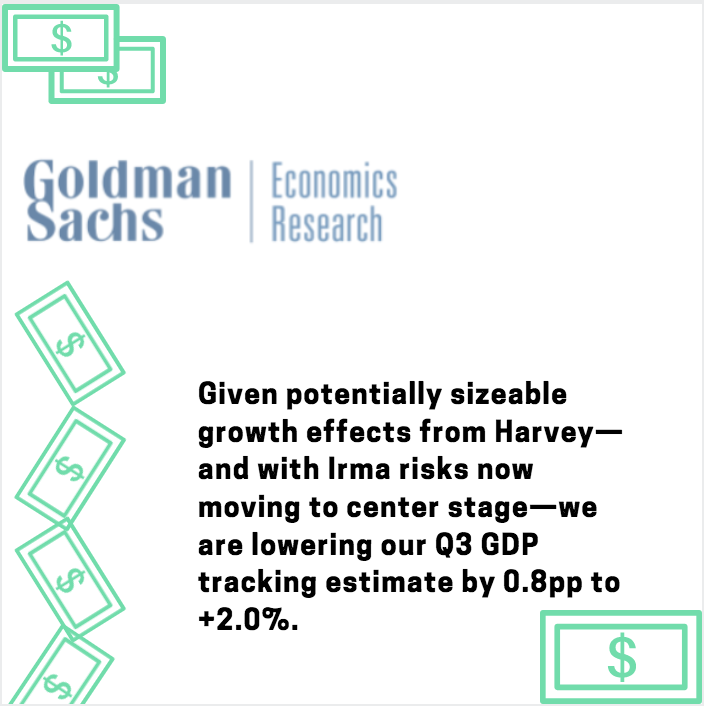The recent natural disasters including Hurricane Harvey and Hurricane Irma could pull down the gross domestic product for the third quarter.
Hurricane Harvey could become one of the most costly natural disasters since World War II as many estimates predicted the damage surpassed that of Hurricane Sandy in 2012, according to the U.S. Economic Analyst: Hurricane Handbook: Natural Disasters and Economic Data report from Goldman Sachs. Hurricane Harvey now stands as the second most severe disaster after Hurricane Katrina.
In a blog, First American Chief Economist Mark Fleming also compared Hurricane Harvey to Katrina, saying it’s hard to estimate how much impact the disaster will have.
“We know, from experience with Katrina, that housing markets respond to supply shocks with fast-rising prices that can be followed by swift corrections,” Fleming writes.
In addition to the lives tragically lost, estimates show the damage could total in the tens of billions of dollars, according to a report, RMBS 2.0 Exposure to Hurricane Harvey Affected Counties, released by Kroll Bond Rating Agency.
 And just a week after Harvey destroyed South Texas and parts of Louisiana, Hurricane Irma swept through Florida.
And just a week after Harvey destroyed South Texas and parts of Louisiana, Hurricane Irma swept through Florida.
Goldman Sachs explained in its report, led by authors Jan Hatzius, Alec Philips and David Mericle, that major natural disasters are associated with a temporary slowdown in most major growth indicators.
“Given potentially sizeable growth effects from Harvey, and with Irma risks now moving to center stage, we are lowering our Q3 GDP tracking estimate by 0.8pp to +2.0%,” Goldman wrote in its report.
However, the report also shows the dips in GDP caused by natural disasters usually see sharper subsequent rebounds. Goldman predicts the hurricanes could reduce GDP by as much as one percentage point.
And while Goldman predicts GDP will drop to 2% during the second quarter, it also predicted this weakness will reverse coarse over the next three quarters, hitting 2.7% in the fourth quarter, 2.5% in the first quarter of 2018 and 2.4% in the second quarter next year.
While an increase from the third quarter’s predicted 2% GDP growth, it is still down from the 3% growth in the second quarter of 2017.
Analysts continue to debate whether President Donald Trump is on track to reach its 4% GDP campaign promise, but this latest development shows it may remain below 3% for at least another year.
And some members of the Federal Reserve are becoming less certain about the possibility of a rate hike in December due to the natural disasters.







